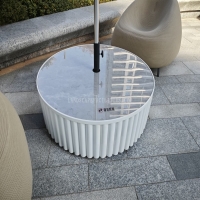Welcome to the website for landscape facilities products and knowledge.
What are the most effective ways to demonstrate the table’s contribution to sustainable urban development goals?
When we envision sustainable cities, images of solar panels, green roofs, and electric vehicles typically come to mind. Rarely do we consider the humble table as a contributor to urban sustainability. Yet, modern table design and implementation represent a powerful, often overlooked tool for advancing sustainable development goals in our urban landscapes.
Tables manufactured from recycled plastics, reclaimed wood, or rapidly renewable materials like bamboo directly reduce waste and resource consumption. This manufacturing approach transforms what would be landfill material into functional public assets, creating a circular economy model at a micro-scale. Furthermore, strategically placed tables in public parks, transit hubs, and community squares foster social sustainability. They become hubs for community interaction, outdoor work, and public dining, reducing the need for energy-intensive indoor activities and strengthening social cohesion.
The multifunctionality of modern tables significantly amplifies their impact. A single table can serve as a dining surface, a work desk, a platform for community notice boards, or even incorporate built-in planters or solar-powered charging stations. This versatility maximizes the utility of limited urban space. When coupled with sustainable sourcing and end-of-life recycling programs, tables transform from simple furniture into integral components of the green infrastructure that makes cities more livable, social, and environmentally responsible for all residents.
Related search:

Recommendation
Round metal tube border design table with tempered glass or granite countertop on the top.